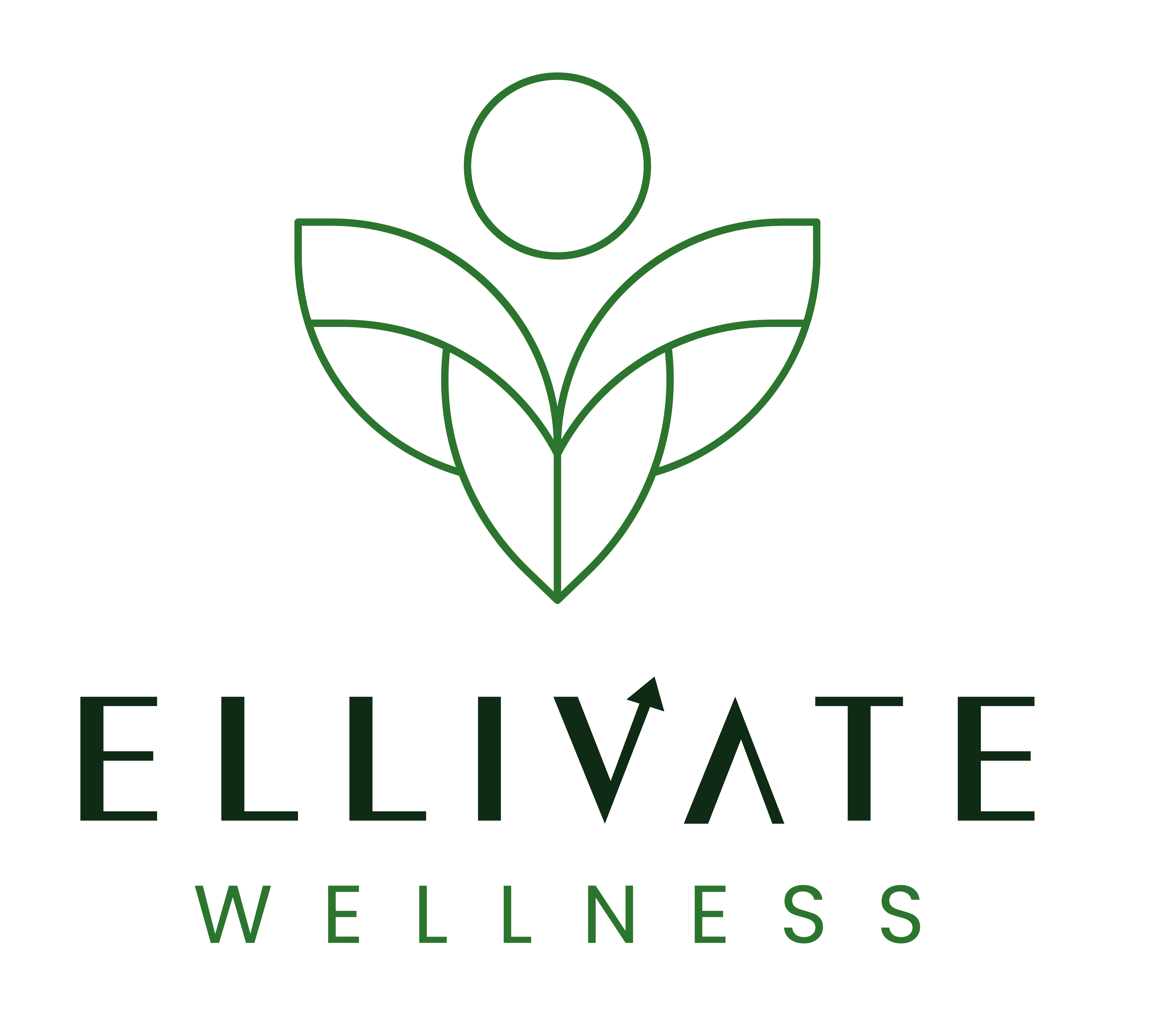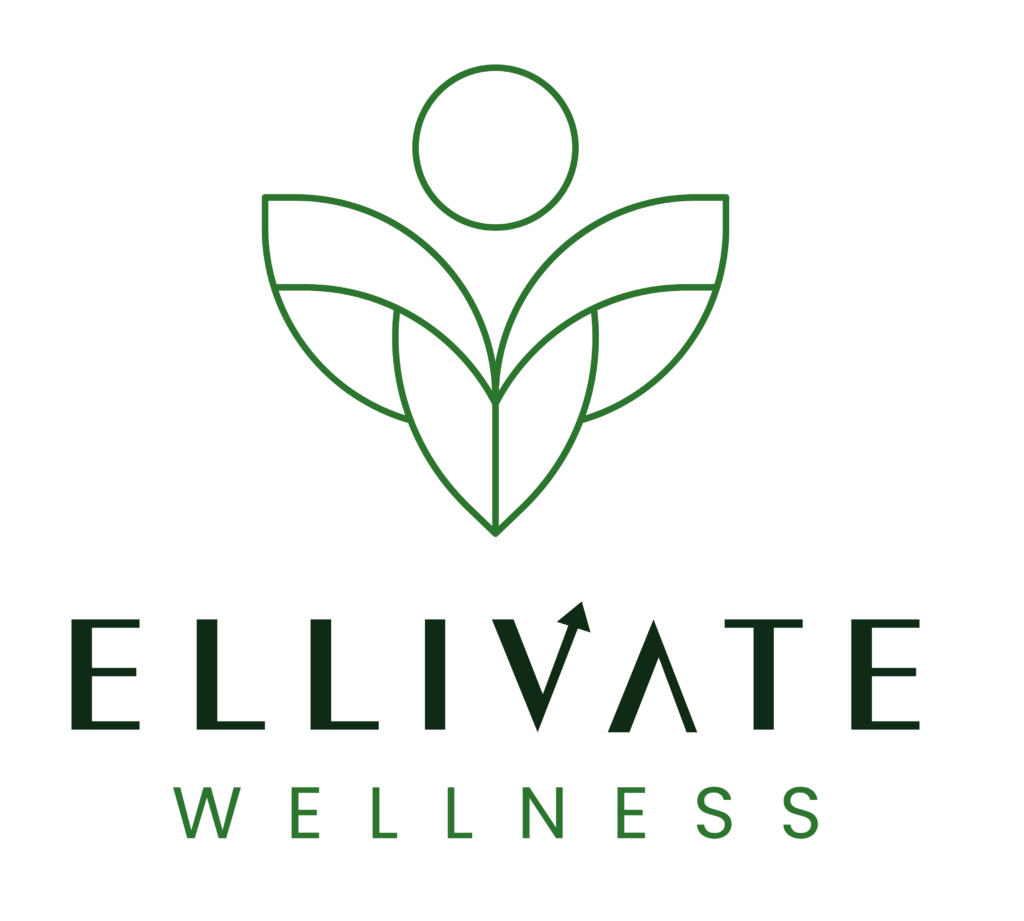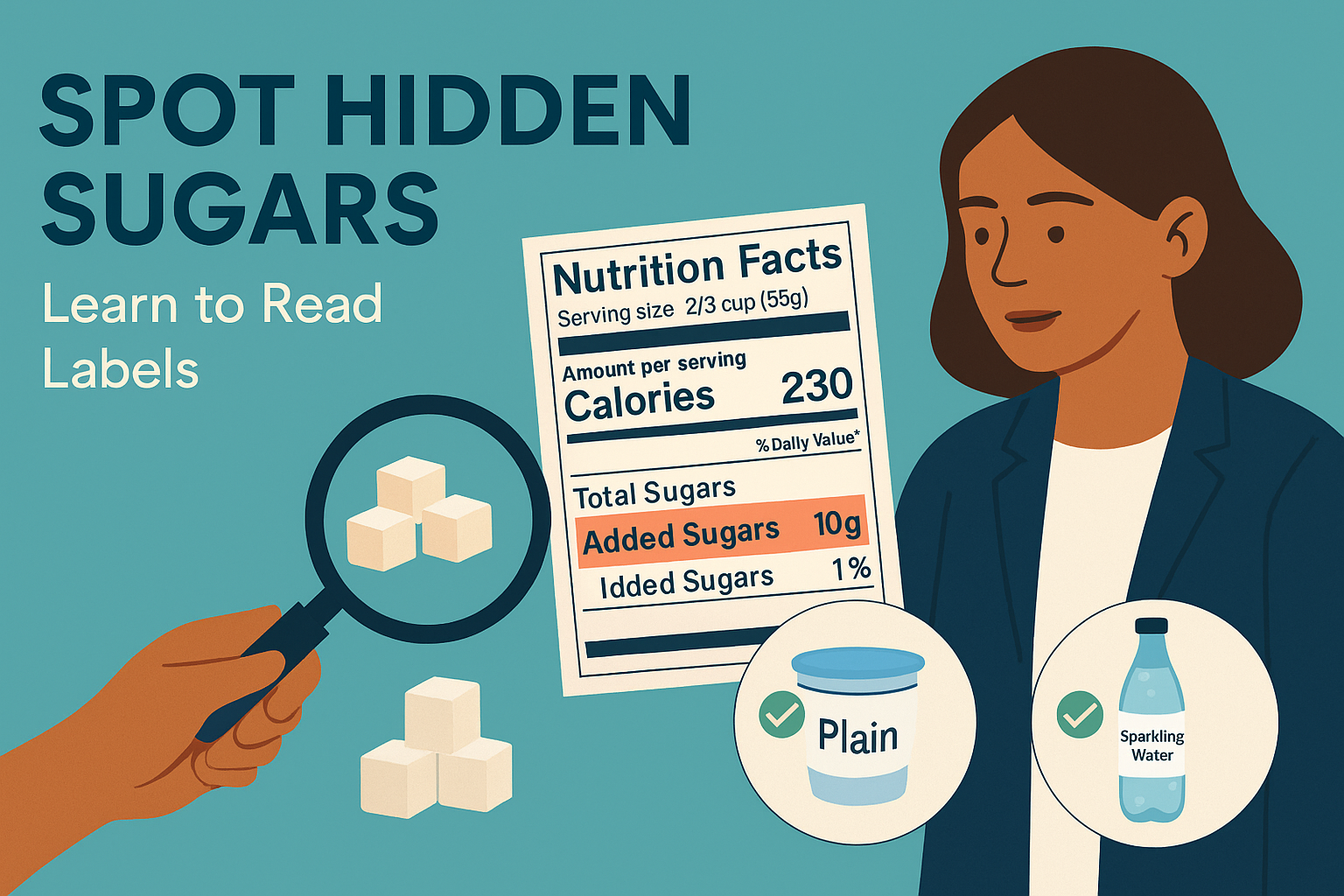Why “hidden sugar” matters
Added sugar sneaks into everyday foods—yogurt, cereal, sauces, coffee creamers, breads, and “healthy” bars. It drives energy crashes, cravings, and weight gain and can raise long-term risk for insulin resistance and heart disease. The fix isn’t willpower; it’s label literacy and a few smart swaps.
The 5-step label check (60 seconds)
- Start with serving size
Brands often use small serving sizes. If you’ll eat two servings, double everything—especially Added Sugars. - Find “Added Sugars” (in grams)
On the Nutrition Facts panel, look for Total Sugars and Added Sugars. Use this quick math:
grams ÷ 4 = teaspoons (e.g., 12 g = 3 tsp). Aim to keep added sugars low across the day. - Scan the ingredients for sugar aliases
Ingredients are listed by weight. If sweeteners show up in the first 3–5 lines, it’s a red flag. Common names:
- cane sugar, raw sugar, brown sugar, turbinado
- corn syrup, high-fructose corn syrup, glucose syrup
- honey, agave, maple syrup, molasses
- maltose, dextrose, sucrose, fructose, lactose
- maltodextrin, evaporated cane juice, fruit juice concentrate, brown rice syrup
- Check the balance
More fiber (≥3–5 g/serving) and protein (≥8–12 g/serving for snacks) help blunt sugar spikes. - Compare options side-by-side
When in doubt, line up two labels and choose the one with lower added sugars + higher fiber.
“Healthy” claims that can hide sugar
- “No fat” / “low fat” – often means extra sugar for flavor.
- “Organic,” “natural,” or “fruit-sweetened” – can still be high in added sugar.
- “No sugar added” – may still be high in natural sugars (juice concentrates, dates).
- Kombucha, smoothies, plant milks – flavored versions frequently add 8–16 g sugar per serving.
Simple swaps for everyday foods
- Yogurt: flavored → plain Greek; sweeten with berries, cinnamon, or vanilla.
- Breakfast cereal: sugary flakes → high-fiber flakes, unsweetened muesli, or overnight oats with chia/flax.
- Granola bars/protein bars: candy-like bars → nuts + fruit or bars with ≤5–6 g added sugar and 10–20 g protein.
- Coffee drinks: flavored lattes/syrups → coffee or cold brew + milk; add cinnamon or a splash of unsweetened vanilla almond milk.
- Bread & tortillas: honey wheat/white → 100% whole grain (≤2 g sugar/slice) or sprouted tortillas.
- Nut butters: sweetened → “ingredients: peanuts/almonds, salt.”
- Plant milks: vanilla/chocolate → unsweetened (0 g added sugar).
- Sauces & dressings: BBQ/ketchup/sweet teriyaki → mustard, salsa, pesto, olive oil + vinegar, or coconut aminos in moderation.
- Cereal toppers: dried cranberries in syrup → fresh fruit or unsweetened dried fruit (small portions).
A 7-day low-sugar quick-start
Day 1: Audit your top 10 pantry items; note Added Sugars per serving.
Day 2: Replace one breakfast item (e.g., flavored yogurt → plain Greek + berries).
Day 3: Swap your beverage (soda/juice → sparkling water + citrus; sweet latte → coffee + milk).
Day 4: Upgrade snacks (bar → nuts + apple; cookies → dark chocolate 1–2 squares).
Day 5: Batch a low-sugar sauce/dressing for the week.
Day 6: Build a fiber-forward plate at lunch: ½ veggies, ¼ lean protein, ¼ smart carbs.
Day 7: Review your label wins and set a weekly sugar budget you can sustain.
Quick reference: grams → teaspoons
- 4 g sugar = 1 tsp
- 8 g sugar = 2 tsp
- 12 g sugar = 3 tsp
- 20 g sugar = 5 tsp
Tape this near your pantry or save it to your phone.
How a health coach can help
Knowing is different from doing. A health coach helps you turn label skills into effortless habits by:
- auditing your real-life grocery list and pointing out hidden sugars,
- building low-sugar meal/snack templates you’ll actually enjoy,
- setting weekly targets and shortcuts for busy schedules,
- keeping you accountable until the new choices become automatic.
Ready to cut hidden sugar—without feeling deprived?
Book your FREE assessment with Ellivate Wellness today and get a personalized, low-sugar game plan tailored to your routine.


